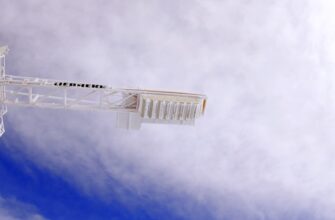- What Are Bitcoin Airdrops and Why They Matter
- Essential Preparations Before Claiming Airdrops
- Step-by-Step Guide to Collecting Bitcoin Airdrops
- Top Safety Tips for Airdrop Participants
- Frequently Asked Questions (FAQ)
- Are Bitcoin airdrops taxable?
- Can I get scammed during airdrops?
- Do I need to hold Bitcoin to qualify?
- How long does it take to receive airdropped tokens?
- Can I participate using exchange wallets?
- Maximizing Your Airdrop Success
What Are Bitcoin Airdrops and Why They Matter
Bitcoin airdrops are free distributions of cryptocurrency tokens to wallet addresses, often used by blockchain projects to boost adoption, reward early supporters, or decentralize ownership. Unlike traditional Bitcoin, most airdrops involve tokens built on Bitcoin layers (like Stacks or RSK) or Bitcoin forks. With some airdrops worth thousands of dollars, learning how to collect them properly is crucial for crypto enthusiasts.
Essential Preparations Before Claiming Airdrops
Before hunting for airdrops, set up these fundamentals:
- Non-Custodial Wallet: Install self-custody wallets like Trust Wallet, Exodus, or MetaMask (for Bitcoin sidechains)
- Bitcoin Address: Maintain an active BTC wallet with transaction history
- Security Measures: Enable 2FA, use hardware wallets for large holdings, and never share private keys
- Research Tools: Bookmark airdrop tracking sites like AirdropAlert.com and follow official project social media
Step-by-Step Guide to Collecting Bitcoin Airdrops
- Discover Legitimate Opportunities
Monitor crypto news sites, Telegram groups, and project announcements. Verify authenticity through official websites and community channels. - Complete Required Tasks
Common requirements include: joining Telegram/Discord, retweeting posts, holding minimum BTC balances, or testing beta products. - Connect Your Wallet Securely
Use wallet connect features on airdrop platforms. Double-check URL authenticity to avoid phishing sites. - Claim Your Tokens
Follow on-screen instructions. Some distributions are automatic; others require manual claiming within set timeframes. - Secure Received Assets
Transfer tokens to your private wallet immediately. Monitor blockchain explorers for transaction confirmation.
Top Safety Tips for Airdrop Participants
- Never pay to receive legitimate airdrops
- Beware of fake support accounts on social media
- Use separate wallets for airdrops and main holdings
- Verify contract addresses on block explorers before interacting
- Assume “too good to be true” offers are scams
Frequently Asked Questions (FAQ)
Are Bitcoin airdrops taxable?
Yes, most countries treat airdrops as taxable income at fair market value upon receipt. Consult a crypto tax professional.
Can I get scammed during airdrops?
Absolutely. Common scams include fake wallet connections, phishing links, and fraudulent gas fee requests. Always verify sources.
Do I need to hold Bitcoin to qualify?
Requirements vary. Some need BTC holdings; others require interaction with specific protocols or social media engagement.
How long does it take to receive airdropped tokens?
Distribution can range from instant to several months after campaign completion, depending on the project’s schedule.
Can I participate using exchange wallets?
Generally no. Most airdrops require non-custodial wallets since exchanges don’t support token distributions to individual users.
Maximizing Your Airdrop Success
Stay organized with a dedicated spreadsheet tracking tasks and deadlines. Engage genuinely with projects rather than chasing every opportunity. Prioritize established teams with transparent roadmaps. As Bitcoin’s ecosystem grows with layers like Lightning Network and Rootstock, airdrop opportunities will evolve – stay informed through trusted crypto education resources.








